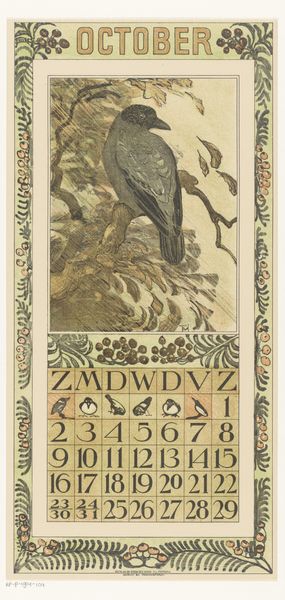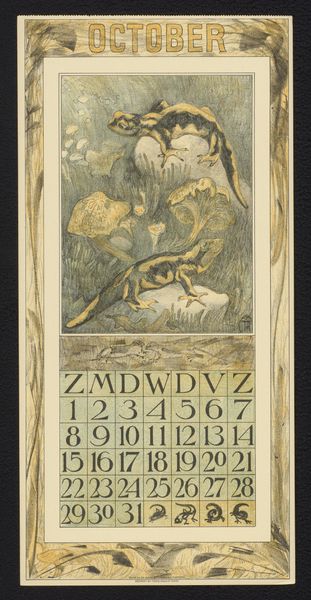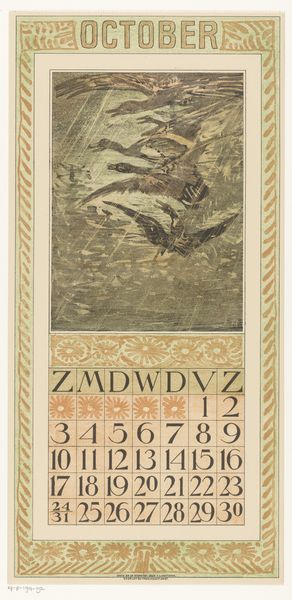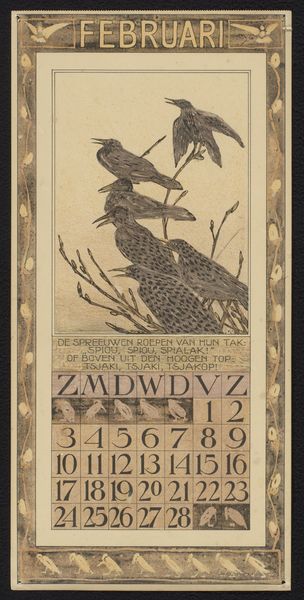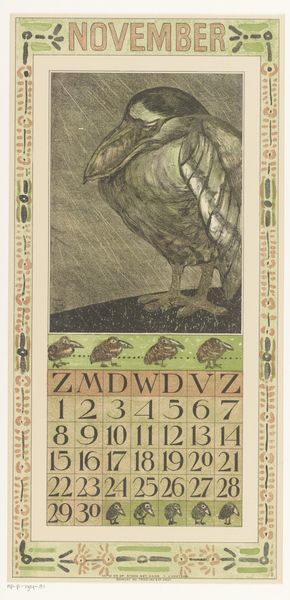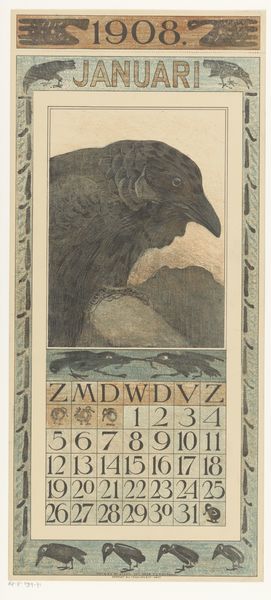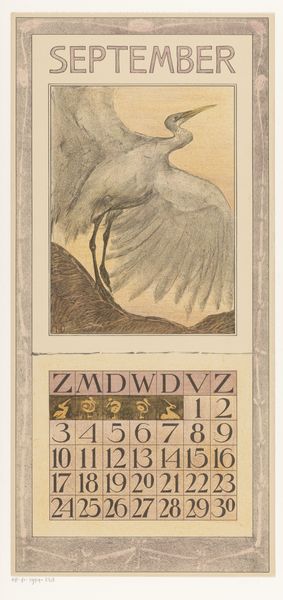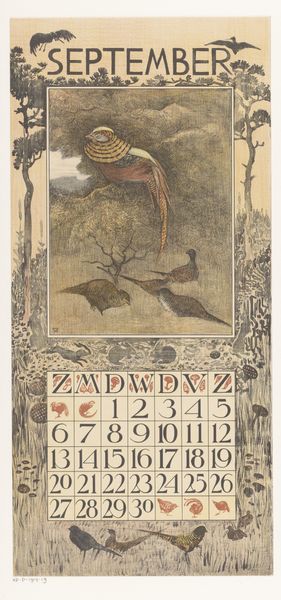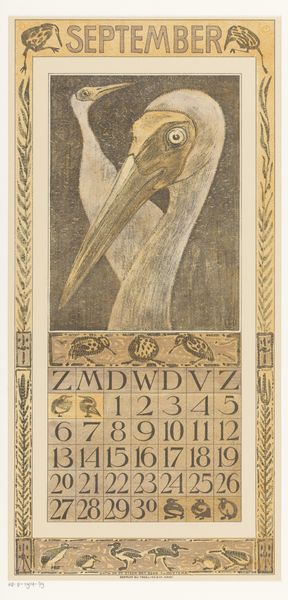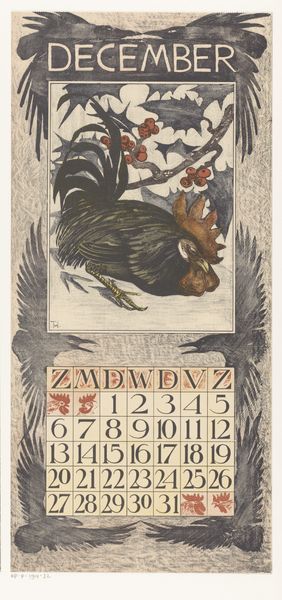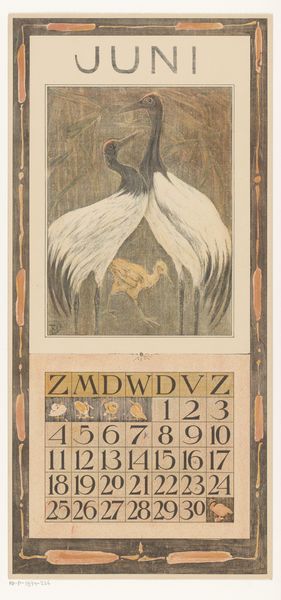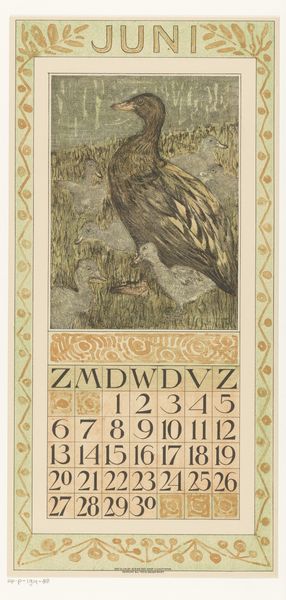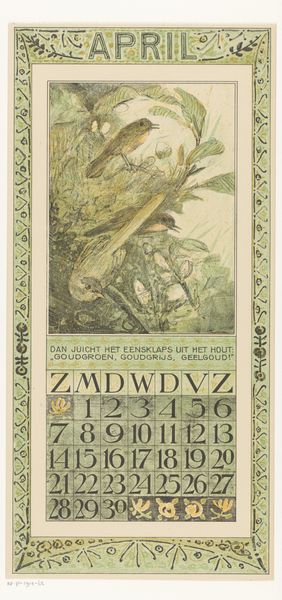
graphic-art, lithograph, print
#
graphic-art
#
art-nouveau
#
lithograph
# print
#
bird
#
watercolor
Dimensions: height 450 mm, width 210 mm
Copyright: Rijks Museum: Open Domain
Editor: This is Theo van Hoytema’s "Kalenderblad oktober met drie vogels," a lithograph from 1904 here at the Rijksmuseum. The composition is so striking. The muted palette and graphic style almost create a somber mood, even with the beautiful birds. What do you make of it? Curator: It reminds me of autumn afternoons, lost in reverie as birds fly overhead... Their movements can be melancholic. But beyond this sentiment, this lithograph—a type of print—encapsulates the essence of Art Nouveau, where nature is both observed and stylized, wouldn’t you agree? It's like a visual poem where October's spirit is found in the flutter of wings and a date grid. See how the birds are rendered, not quite realistically but with an incredible eye for line and form? Editor: Definitely. The almost abstract rendering is something. I hadn’t thought about how perfectly the image works as a calendar! Is there something particularly Dutch about this blend of naturalism and graphic design? Curator: Hmm, I think so! Hoytema's deep connection to the Dutch landscape and his sensitivity to capturing nature's subtle details ties perfectly with the very practical purpose of a calendar. But also there’s this move toward simplification of forms – it shows how the Netherlands were participating in broader European movements. What I love about it is its simultaneous appeal to decorative and utilitarian desires. Do you see that balance? Editor: Yes, I think I do. I appreciate how the piece made what otherwise would have been simple dates and numbers, more poetic and artful. Curator: Precisely! Art Nouveau aspired to infuse everyday life with beauty. Something as mundane as a calendar becomes a work of art – a reminder that beauty can be found even in marking the passage of time. It's truly a celebration of nature's rhythms woven into the fabric of our daily lives, wouldn’t you agree?
Comments
No comments
Be the first to comment and join the conversation on the ultimate creative platform.
